Skirt Steak Salsa Verde
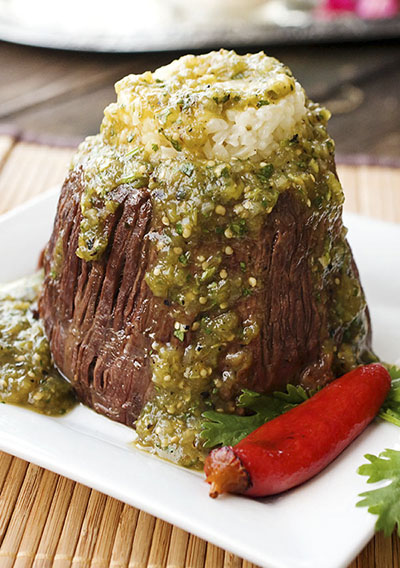 It may not be technically summer yet, but you wouldn't know that in central Florida. It has been summer for over a month now with high-80s temperatures and daily booming thunderstorms. Summer, even in the tropics, means cooking outdoors -- and for a good chunk of America, cooking outdoors means steak.
It may not be technically summer yet, but you wouldn't know that in central Florida. It has been summer for over a month now with high-80s temperatures and daily booming thunderstorms. Summer, even in the tropics, means cooking outdoors -- and for a good chunk of America, cooking outdoors means steak.
Beef has more variety than perhaps any food animal, save the pig. Forget the braised short-ribs and oven roasts of the colder months, what's your favorite summer must-have on the grill? The tender thickness of filet mignon? The classic bone-in NY Strip? The assertive beefiness of sirloin? The juicy chuck 1/2 pound hamburger? The macho inch-thick T-bone? The slow cooked spare-ribs? The upscale elegance of ribeye? Texas-style pulled-beef brisket? Or the modern discovered treasure of the flat-iron steak?
Yeah, yeah, all good, but one cut of beef that has been long favored outside of America is starting to be respected by the backyard weekend warrior -- outside skirt steak.
I made a skirt steak on the grill, but instead of the common (yet drool-worthy) chimichurri, I made a roasted salsa verde with fresh tomatillos.
To jump briefly into cattle anatomy, the skirt steak is a belly piece, from the lower-ish rear of cattle. The inside skirt steak is part of the flank (abdominal muscle) similar to a cut used for London Broil. The outside skirt is more popular in supermarkets and restaurants as it's more tender, though very obviously grained and fatty. The outside skirt is part of the diaphragm muscle, though it has some attachment to the rib cuts of cattle.
Skirt steak has a reputation of being hard to cook, but outside skirt steak is actually pretty easy and definitely worth it if a couple very simple techniques are used:
* Marinate the meat, to compliment the flavor. Skirt steaks are fatty, but many herbal flavors are more soluble in fat than in water. That means marinating skirt steak will deliver a lot more flavor than marinating, say, filet mignon. Summer herbs like thyme and chives and fresh (not dried) oregano will be wonderful, along with some garlic and dijon mustard, and a nice, hopsy beer. 45 minutes of marinade will help, but four to six to eight hours will add layers upon layers. * Cook fast over very high heat. It's a thin cut, so a fast sear will add all sorts of Maillard reaction flavors, but you don't have to worry about overcooking the outside while the inside is still chilled (like, again, an 8 oz filet mignon). Think of that sizzling plate with fajita strips, which is often from the same cut of beef. * Don't overcook. Skirt is best at medium-rare to medium. If it pushes into medium-well or beyond, you might end up with shoe leather. Skirt can overcook rapidly, but it's not too hard as long as you don't walk away from it as it cooks. Stick around, and poke at it from time to time.
There are other tips floating around, like cut against the grain, and slice at an angle...but with a long, thin cut like skirt steak, it's pretty hard not to cut it correctly. Think sushi-style -- thin, and on at least a 45-degree bias.
For dinner, I cleaned off some of the chunkier pieces of fat and gristle, but a lot of this type of fat will melt on the grill.
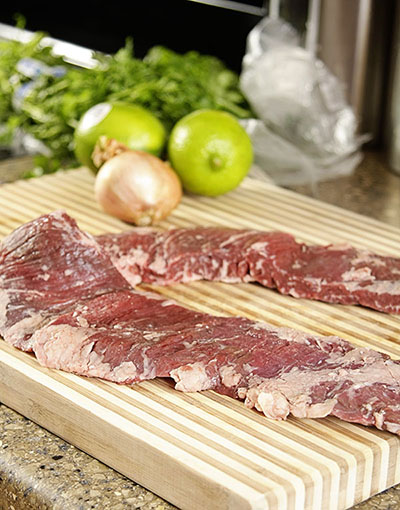
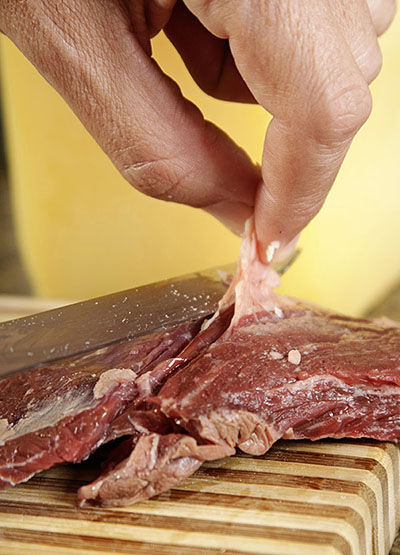
I made a marinade with shallots, lime juice, a whopping chunk of cilantro, kosher salt, fresh black pepper, gobs of garlic, orange juice, and a bit of olive oil. Beer would work really well instead of the lime juice and OJ, but I went a little mojo this time.

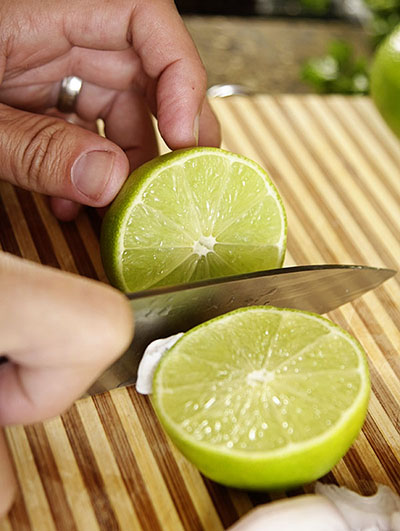
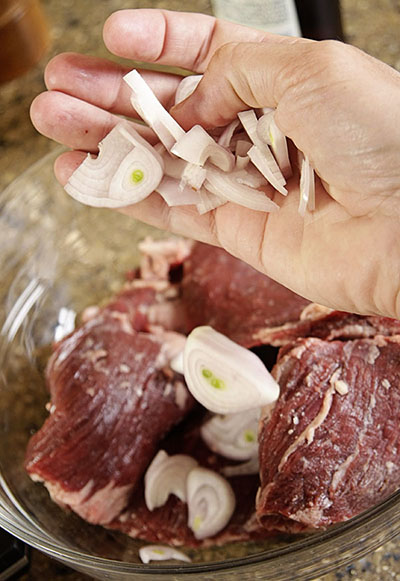
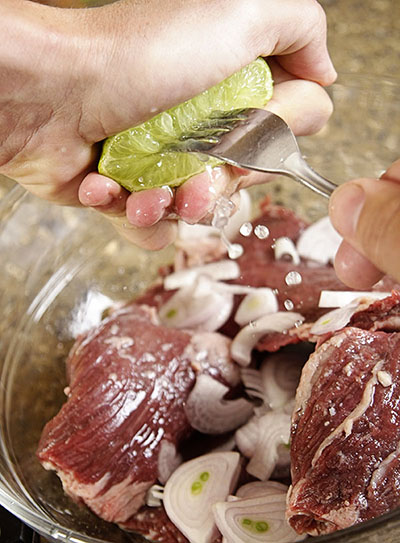
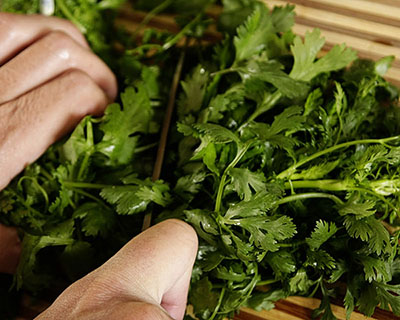
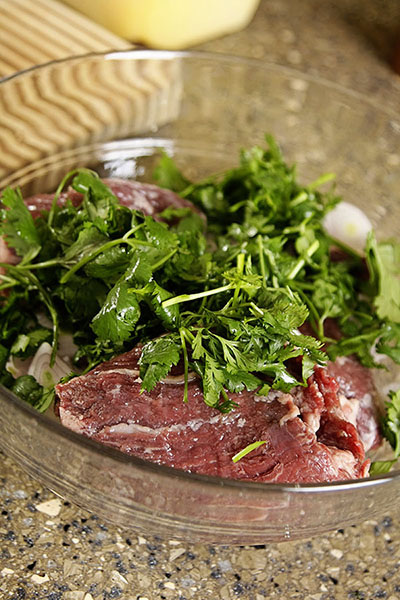
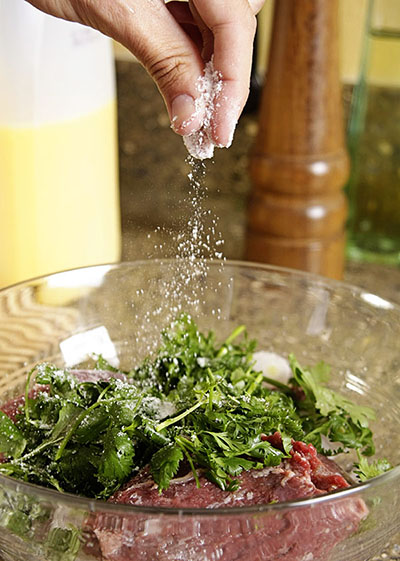
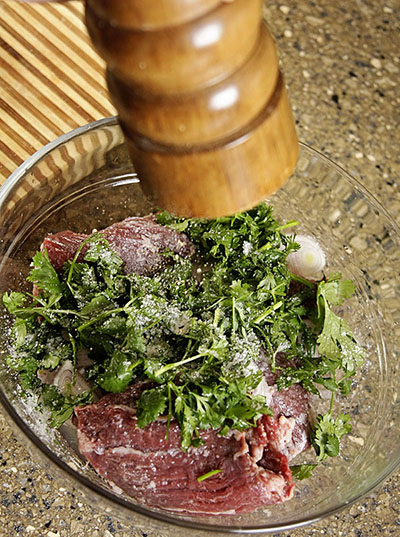
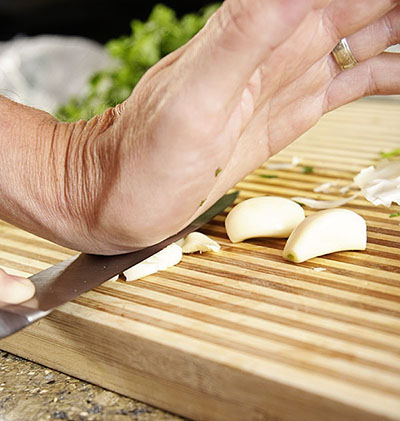
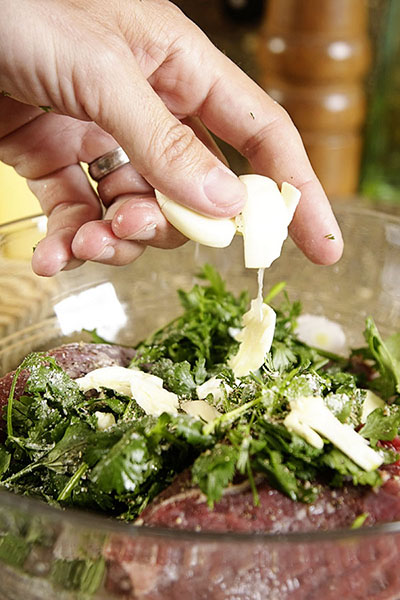
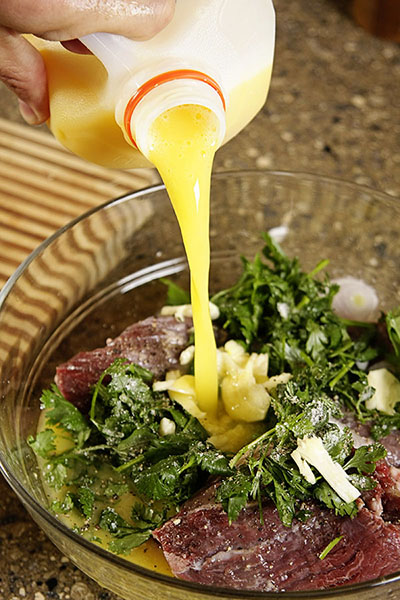
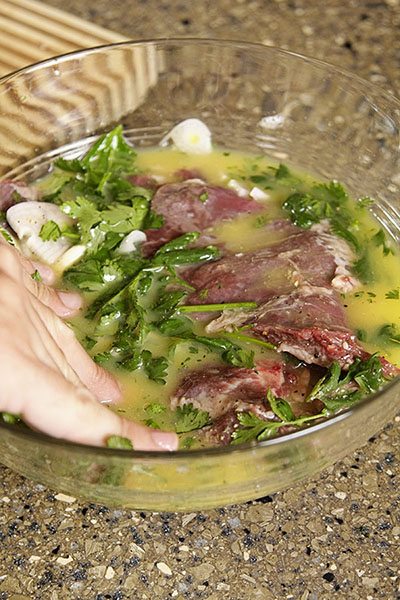
I stuck the steak and marinade in the fridge for about four hours. When there was about an hour left, I started working on the salsa verde.
Salsa verde with tomatillos is a rustic, unstrained sauce, usually Mexican in origin, but bleeding over the border into the southwestern US (the literal name, "green sauce" can mean a zillion other sauces in other Romance languages, using many other fruits, vegetables, and herbs).
I happened upon a roasted version a few years back, and it's still my favorite. I peel the husks off the tomatillos and put them on a foil-lined and oiled sheet pan. I slice a sweet onion into thick slices and scatter those over the pan, smash a couple cloves of garlic and do the same, and add a few jalapeños (after seeding and de-veining them).
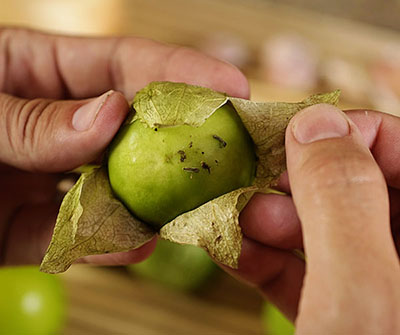
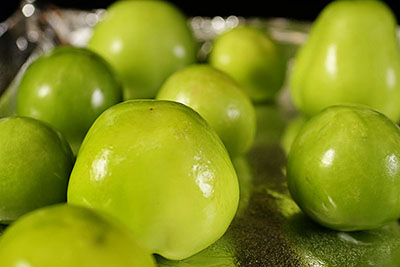
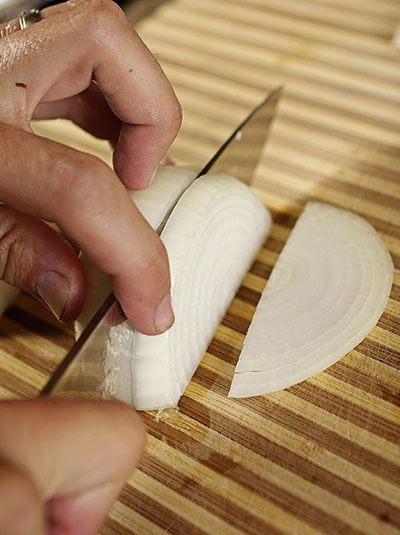
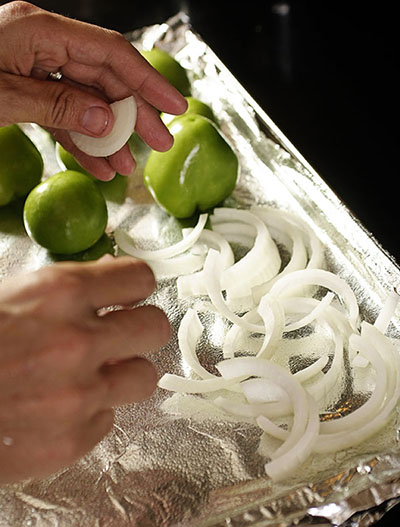

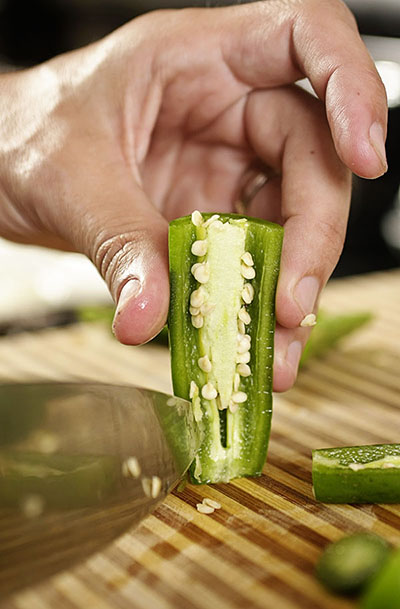
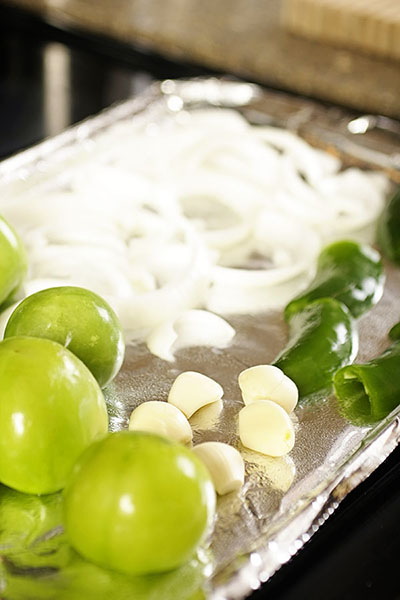
The pan goes into a 400 degree oven for 20-30 minutes, or until the tops of the tomatillos start to brown and the onions start to caramelize on the edges.
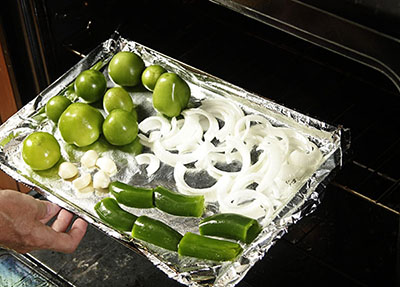
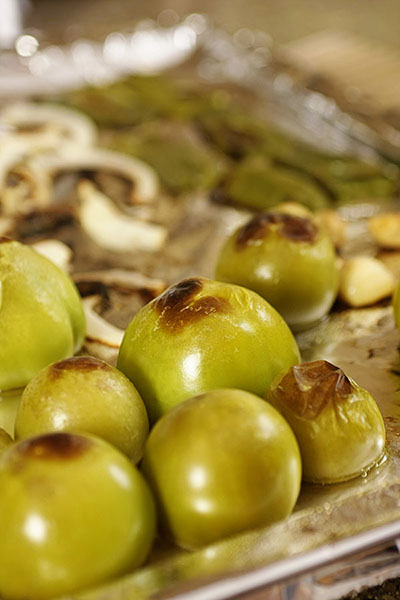
At this point, everything on the pan goes into a food processor to be rough-chopped into a salsa. It's a guacamole kind of blend -- not glass smooth, but no really huge chunks bigger than a rough-dice.

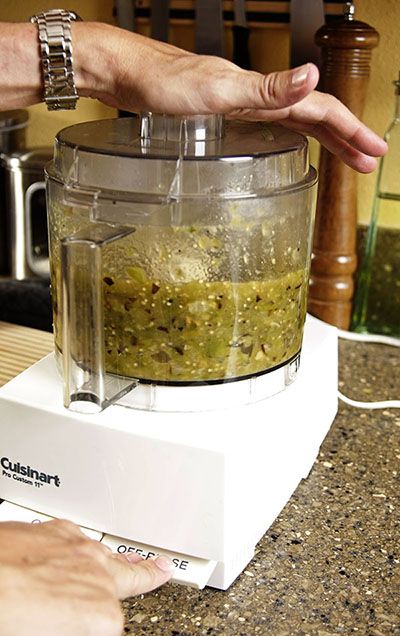
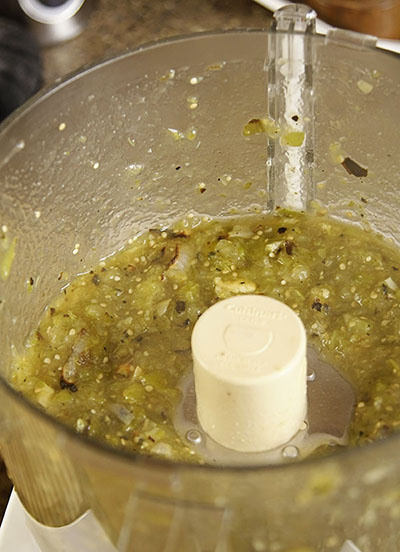
Salt to taste, but then taste. Like a good Italian tomato sauce, a bit of sugar can also bring out the sweetness and mellowness of the tomatillos, and cut down on the heat if the chilis end up being too assertive.

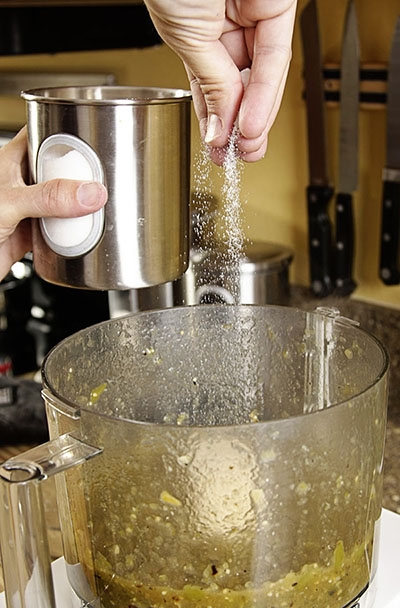
For a final touch of flavor, I add another good, hearty chunk of cilantro, along with some lemon juice for sweet acidity.
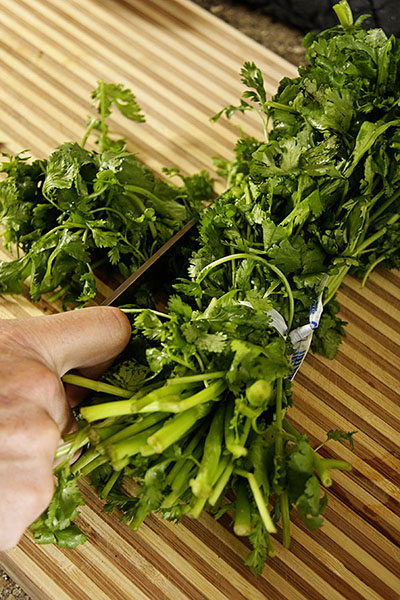


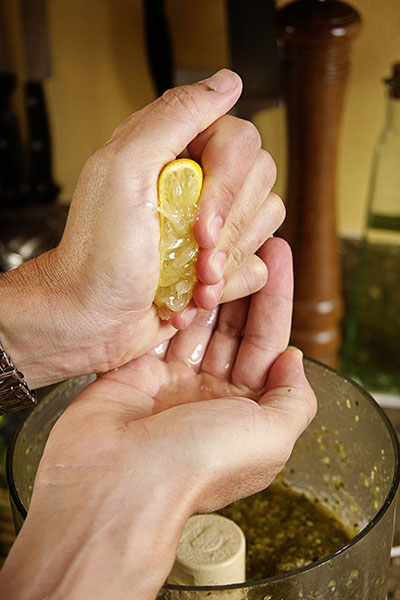
The skirt steak cooks quickly. On a preheated, sizzling grill, I tossed the whole skirt on. Three to five minutes on one side, then flipped and two to three on the other. As opposed to a roast, a skirt doesn't need to rest for 10 to 20 minutes -- the thinness makes it ready within a couple minutes off the grill, while it's still spitting.

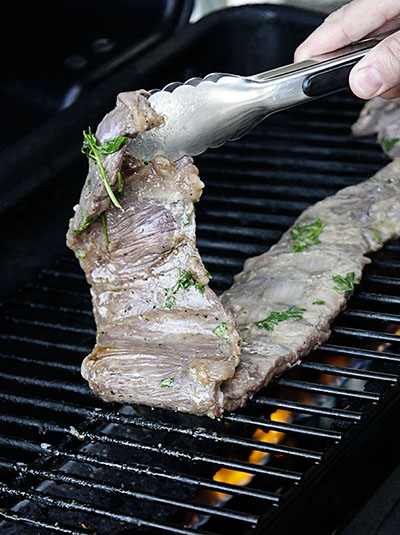
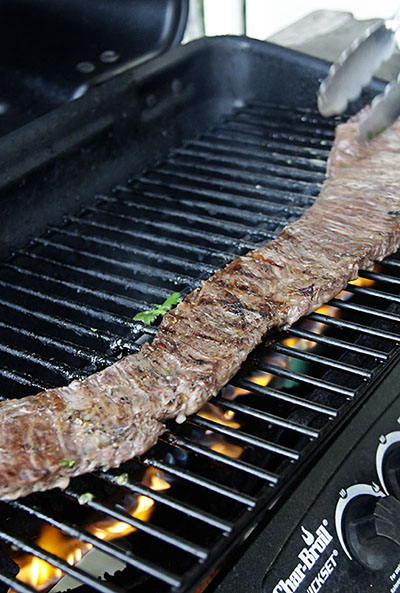
For plating, we circled a half-cut of steak around a pile of rice, and drizzled the salsa verde over the top, with a cilantro and jalapeño garnish.

Deconstruction: For those who have read our Grass Fed Beef Tasting post, this wasn't Hearst skirt steak. We actually cooked this a week or so before our beef tasting party, but haven't actually had time to post until now. So, this was store-bought grain-fed beef.
It was still fabulous, and I can only imagine how much different the grass-fed would be with the same recipe, as grass-fed skirt steak scored the highest in our dinner party. Still, it's a great recipe for any source of skirt steak and was definitely a welcome change from the typical summer grilled strip steak.



